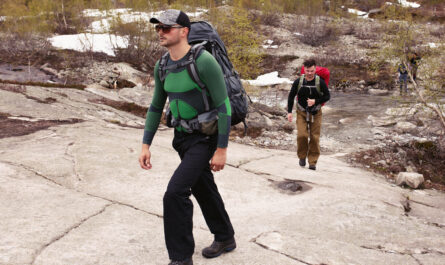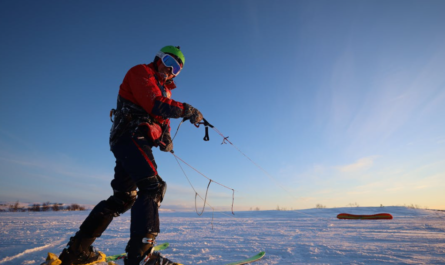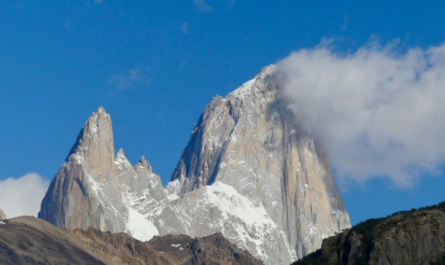The Saint Moritz region, nestled in Switzerland’s Engadine Valley, is a veritable paradise for runners who crave pristine alpine landscapes and challenging off-road routes. Cradled by towering peaks and streaked with crystalline lakes, this high-elevation destination offers an exhilarating blend of well-marked singletracks, forest trails winding through pine-scented woodlands, rocky ascents, and panoramic ridgelines. The area’s dry mountain air, unpredictable weather patterns, and varied terrain mean that runners need gear crafted not just for comfort and performance, but also for safety and adaptability. Whether you’re planning a brisk 10K along rolling foothills or a multi-day traverse that tests your endurance at altitude, having the right shoes, apparel, and accessories can make all the difference. This guide will walk you through a comprehensive list of trail running essentials for the Saint Moritz region—highlighting must-have items, practical tips, and thoughtful considerations designed to optimize your experience amid the Swiss Alps.
1. Understanding the Saint Moritz Environment
1.1 High Altitude and Variable Weather
Saint Moritz sits at approximately 1,822 meters (5,977 feet) above sea level—altitude enough to have a noticeable impact on oxygen intake. Many popular trails ascend much higher, sometimes surpassing 3,000 meters. At these elevations:
- Air is Thinner: You’ll feel increased breathlessness if you’re not accustomed to altitude. Climbing steep slopes quickly can tax your lungs and heart more than at sea level.
- Temperatures Fluctuate: In summer, afternoons can be pleasantly warm, but nights and early mornings remain chilly. A mid-day thunderstorm or passing front can drop temperatures abruptly.
- UV Exposure is High: Thin atmosphere means stronger sunlight. Sunburn can happen quickly if you’re not prepared.
1.2 Technical Terrain
Engadine trails vary widely in difficulty. Lower-elevation loops pass through gentle meadows and larch forests, but higher routes near Piz Nair, Diavolezza, or Corvatsch might involve:
- Rocky Scrambles: Loose scree and exposed slabs where footing must be sure.
- Steep Ascents/Descents: Switchbacks that test quadriceps on the climb and ankles on the descent.
- Stream Crossings or Snowfields: Depending on the season, you might need to navigate melting snow patches or shallow waterways.
1.3 Importance of Proper Gear
Having appropriate gear is critical in a setting where weather changes unpredictably, underfoot conditions vary, and altitude demands extra caution. While minimalism works in some contexts, Saint Moritz’s alpine environment often calls for robust footwear, layered clothing, hydration solutions, and safety accessories. The goal is to move efficiently without compromising comfort or protection.
2. Trail Running Footwear
2.1 Shoe Design and Traction
The foundation of any trail runner’s kit is the shoe. In Saint Moritz, you’ll want:
- Aggressive Outsoles: Deep lugs (4–6 mm) or specialized rubber compounds like Vibram Megagrip or Contagrip for wet rocks, slippery forest paths, and loose scree. Secure traction is non-negotiable when negotiating steep climbs or swift descents.
- Protective Uppers: Reinforced toe caps guard against collisions with hidden rocks. Durable side panels resist abrasion from brush or sharp stones.
- Rock Plates or Underfoot Protection: Thin, flexible plates can prevent stone bruises without adding much weight.
2.2 Cushioning and Drop
- Moderate Cushioning: Alpine terrain can be punishing on joints, especially during descents. Shoes with balanced cushioning help reduce impact, though excessively soft midsoles might compromise stability on rugged ground.
- Heel-to-Toe Drop: A range of 4–8 mm drop often strikes a good balance between natural foot strike and enough elevation to ease strain on calves. Ultra-low drops can be jarring on steep downhills unless you’re used to them.
2.3 Waterproofing vs. Breathability
- Waterproof Membranes (e.g., GORE-TEX): Beneficial if you expect consistent rain or frequently encounter snowfields. However, they can overheat feet in warm conditions and dry more slowly if water seeps in from the ankle collar.
- Breathable Mesh: Rapidly drains water and allows airflow in summer. Great for quick-drying performance, but you sacrifice some water resistance.
Top Shoe Picks might include:
- Salomon Speedcross (renowned lug pattern, snug fit),
- La Sportiva Bushido (aggressive grip, excellent rock protection),
- Hoka One One Torrent or Speedgoat (ample cushioning, stable platform).
3. Apparel and Layering Strategies
3.1 Baselayers
- Moisture-Wicking Tops: Synthetic blends or merino wool efficiently transport sweat away from skin. Merino offers natural odor resistance, ideal for multi-day runs.
- Thermoregulation: In cooler morning starts, a long-sleeved lightweight baselayer can keep you warm without causing overheating once you start climbing.
3.2 Mid-Layers
- Light Fleece or Synthetic Jacket: If you’re venturing into higher altitudes where cold winds are common, a thin fleece or lightly insulated synthetic jacket (e.g., Polartec Alpha) can be a lifesaver when you pause at scenic overlooks.
- Ventilation Features: Look for partial-zips or mesh panels that allow quick heat release. The capacity to regulate your core temperature is paramount on steep climbs.
3.3 Outer Shells
Saint Moritz weather can pivot from sunny skies to sudden storms.
- Windbreaker: A minimalist wind shell packs down to the size of a fist and shields you from strong alpine gusts. Perfect for ridgeline runs.
- Waterproof Jacket (2.5 or 3-layer material): For longer excursions or if storms loom, invest in a GORE-TEX Active or eVent jacket. Pit-zips or core vents help manage moisture. Look for a trim, athletic cut to minimize flapping in the wind.
3.4 Bottoms
- Trail Shorts: 2-in-1 shorts (tight liner + loose shell) reduce chafing. Zippered pockets along the waist can store a phone or gels.
- Compression Tights/Capris: Provide muscle support, help with temperature regulation, and protect legs from trail debris. Useful in early spring or autumn when temperatures drop.
3.5 Accessories
- Sun Protection: High-altitude UV can be brutal. A breathable cap or visor shields your face, while sunglasses with polarized or category-3 lenses reduce glare from snowfields or bright skies.
- Buff or Neck Gaiter: Multi-functional—can be worn as a headband, beanie, or neck protector against chilly winds.
4. Hydration and Nutrition Essentials
4.1 Hydration Packs and Vests
When running trails above 2,000 meters, dehydration risk intensifies due to thin air and increased breathing rates.
- Vest Style: Many trail runners prefer a 5–12 L vest with secure front pockets for quick access to soft flasks. The streamlined design minimizes bounce.
- Hydration Reservoirs: A 1.5–2 L bladder can be handy for runs exceeding 2 hours, especially if water sources en route are scarce. Check local trail maps for public fountains or streams.
- Fit and Adjustability: Chest and side straps should be easily adjustable to prevent shifting during technical descents.
4.2 Bottles vs. Flasks
- Soft Flasks: Compact when empty, easy to stash in vest pockets. Great for short to medium runs where you can refill occasionally.
- Rigid Bottles: More durable, easier to fill with electrolytes or powders without spillage. Typically heavier and bulkier.
4.3 Fuels and Supplements
- Energy Gels or Chews: Quick carbs for mid-run boosts. Some contain added electrolytes to compensate for sweat losses.
- Real Food Options: For longer outings, items like homemade energy bars, dried fruit, or small sandwiches provide variety. Altitude can dull appetite, so choose palatable foods.
- Electrolyte Drinks: Replenish sodium, potassium, and magnesium to prevent cramping. Powdered mixes are lightweight and easy to dose.
5. Running Poles and Technical Accessories
5.1 Trail Running Poles
Popular among mountain runners for:
- Reduced Leg Strain: Poles help transfer some workload to upper body during steep climbs.
- Improved Stability: On tricky descents or when crossing snow patches near glaciers, poles offer additional balance.
- Foldable or Telescopic: Choose collapsible poles (carbon or aluminum) that pack into your vest when not in use. A small folded length (30–40 cm) is ideal.
Tips for Poles:
- Correct Sizing: Elbows should be at a ~90° angle when the pole tip touches the ground next to your feet.
- Pole Technique: Keep a rhythmic arm swing. Plant poles behind your feet when ascending for forward propulsion.
5.2 GPS and Navigation
- GPS Watches: A reliable GPS watch (Garmin, Suunto, Coros) helps track distance, elevation gain, and route. Many have built-in altimeters for real-time elevation.
- Offline Maps: Trails in the Engadine are often marked, but carrying a mobile app (e.g., Gaia GPS, Komoot) or a dedicated handheld GPS unit can be invaluable if fog sets in. Remember that phone reception might be patchy at altitude.
- Paper Maps: SwissTopo maps provide excellent detail. Stash a waterproof map for backup navigation and to identify bailout routes if weather turns foul.
5.3 Lights
- Headlamp: Even if you set out early, mountain conditions or slower pacing can lead to unexpected late finishes. A headlamp with at least 200–300 lumens ensures you can safely navigate in low light.
- Spare Batteries or Charging Option: Long runs might require extended usage. Some headlamps have rechargeable packs you can top off with a power bank.
6. Safety and Emergency Gear
6.1 First-Aid Kit
- Compact Items: Adhesive bandages, blister treatments (e.g., hydrocolloid patches), antiseptic wipes, and ibuprofen or paracetamol for minor pain management.
- Elastic Bandage: Useful for joint sprains or compressing a wound until you reach help.
6.2 Emergency Blanket
- Thermal Foil Blanket: Weighs next to nothing, yet critical for preventing hypothermia if you’re injured or forced to stop.
6.3 Whistle and Reflective Elements
- Signal Whistle: Helps rescuers locate you in dense fog or after dark. Many vests integrate a whistle on the chest strap.
- Reflective Tabs/Clothing Accents: In case you need to run along a road section at dawn/dusk, reflective details enhance visibility to motorists.
6.4 Communication Device
- Mobile Phone (Fully Charged): Load local emergency numbers (144 for Swiss ambulance). Check coverage maps in remote areas.
- Satellite Communicator or Personal Locator Beacon (PLB): Serious consideration if venturing into lesser-known routes or on multi-day self-supported missions. Can summon rescue services even without cell reception.
7. Environmental and Weather Considerations
7.1 Layering for Alpine Conditions
As you climb from a valley floor at 1,800 meters to a ridge above 2,800 meters, temperatures can drop 10°C or more. Proper layering is crucial to avoid both overheating and chilling.
- Responsive Adjustments: Remove windbreakers on uphill grinds, add them when resting or during descents.
- Storm Preparedness: Mountain storms can arrive swiftly. Bring a waterproof shell if there’s any risk of precipitation.
7.2 Respecting the Local Ecosystem
- Trail Etiquette: Remain on designated paths to protect fragile alpine vegetation. Over centuries, these ecosystems adapt to thin soil layers; stray foot traffic can harm them.
- Wildlife Awareness: Encountering ibex, chamois, or marmots is possible. Keep a respectful distance. Do not feed wildlife—human food disrupts their natural diets.
7.3 Seasonal Variations
- Spring (April–May): Snow may linger on upper trails. Crampons or microspikes might be necessary for early-season routes.
- Summer (June–August): Peak running season with longer daylight hours but also a higher chance of midday storms. Mornings are typically calm and stable.
- Autumn (September–October): Crisp air, fewer crowds. Trails remain accessible until the first major snowfall. Vibrant foliage around larch forests.
- Winter (November–March): Traditional trail running is limited, but some enthusiasts transition to snow-running with specialized traction devices or try cross-country skiing as alternative training.
8. Practical Tips for a Successful Saint Moritz Trail Run
8.1 Acclimatization
- Arrive Early: Spend a couple of days doing light hikes or lower-elevation jogs to adapt to thinner air.
- Hydrate More Than Usual: Altitude accelerates fluid loss. Drinking adequately helps mitigate headaches and fatigue.
8.2 Route Planning
- Use Local Resources: Tourist centers in Saint Moritz offer free maps and advice on trail conditions. Check for closures or wildlife protection zones.
- Check Weather Forecasts: Swiss meteorological services (e.g., MeteoSwiss) provide detailed daily and hourly updates. Avoid ridgelines if lightning is predicted.
- Time Management: Alpine runs often take longer than you’d expect at sea level, factoring in steeper grades, scenic photo stops, or rest breaks.
8.3 Post-Run Recovery
- Refuel Promptly: Within 30 minutes, consume a mix of carbohydrates and protein (e.g., a recovery shake or balanced meal).
- Stretch and Soothe Muscles: Light stretching or yoga fosters flexibility. Consider a soak in Saint Moritz’s famed spa facilities to ease post-run soreness.
- Monitor Altitude Effects: Headaches, disrupted sleep, or unusual fatigue might signal mild altitude sickness. Descend if symptoms worsen.
9. Summary of Must-Have Gear
- Trail Running Shoes: Aggressive tread, robust toe protection, moderate cushioning.
- Layered Clothing System: Breathable base (merino or synthetic), insulating mid-layer, weatherproof shell.
- Hydration Solutions: Vest or pack with 1–2 L capacity plus water filtration or purification tablets if you’ll be filling from streams.
- Nutrition & Fuel: Energy gels, bars, electrolytes, plus real-food snacks for sustained energy.
- Navigation Tools: GPS watch, smartphone app with offline maps, or a paper SwissTopo map for backup.
- Safety Kit: Small first-aid kit, thermal blanket, whistle, phone with emergency numbers.
- Optional Extras: Poles for long climbs, protective sunglasses, buff/hat, compact headlamp for unexpected late finishes.
10. Conclusion: Embrace the Alpine Adventure
Trail running in the Saint Moritz region is a sensory feast: the crunch of gravel underfoot, the sparkle of sun on Lake St. Moritz, the tang of pine-laced air, and the rush of high-altitude endorphins. Yet the stunning panoramas and physical rewards come with responsibility. Alpine terrain demands respectful preparation, from selecting appropriate footwear to planning for abrupt weather shifts. A well-thought-out gear strategy isn’t merely about comfort—it can be the line between a triumphant summit and a precarious situation.
As you lace up your trail shoes and set out to conquer the switchbacks and ridgelines above Saint Moritz, remember that every ounce of gear you carry should serve a clear purpose: safety, efficiency, or enjoyment. By investing in high-quality footwear that grips the region’s rocky trails, clothing layers that adjust to shifting mountain climates, and navigation tools that keep you on the right path, you empower yourself to run longer, recover better, and soak in the majestic beauty of the Swiss Alps without undue worry.
Whether you’re a seasoned mountain runner returning for yet another summer challenge or a curious newcomer lured by the romantic allure of Engadine’s peaks and valleys, the combination of top-tier gear and mindful preparation will shape your journey. Celebrate the athleticism of ascending well-worn trails, the exhilaration of cresting a sunlit pass, and the relief of descending back into the historic town of Saint Moritz—ready to recover, refuel, and plan the next route. The mountains here offer infinite variety; equip yourself wisely, and each run becomes a moment of pure alpine transcendence.



